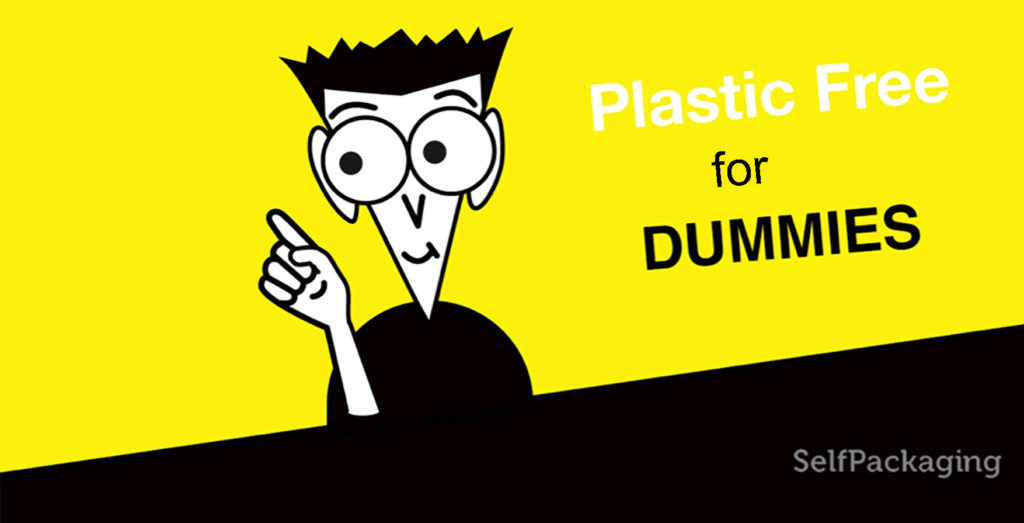
If you feel totally lost because of the rising trend of going plastic free topic, don’t stress SelfPackaging is going to help you. In a world whereas awareness of recycling and sustainability is becoming more important, companies and consumers need to adapt to new changes.
We should all take care of the environment!
We are currently flooded with plastic waste, however, have you ever stopped and wondered where and how is made?
Plastic is a material that comes mostly from the distillation of oil. It is obtained by polymerizing compounds derived from petroleum and natural gas.
Material that is mostly used for packaging, consumer goods, textile or tech devices, among others. The extensive use of plastic is causing serious issues in our environment.
The study demonstrated that humans produced more than 8.3 trillion metric tons of plastic waste. Only 9% it’s been recycled and 12% incinerated, which means that the remaining 79% ends contaminating our oceans, and natural habits.
As a consequence, plastic pollution keeps rising and it’s becoming a serious climate-change hazard. According to the report by the Center for International Environmental Law “Packaging is one of the most problematic types of plastic waste, as it is typically designed for single use, ubiquitous in trash, and extremely difficult to recycle”
We should all take conscience and start investing and looking for less contaminating alternatives for packaging, such as cardboard.

Basic survival guide
Don’t be fooled, around 90% of plastic isn’t recycled. Therefore, here’s a simple and informative list of different plastics and its utility. after reading you’ll be an expert!
Is plastic recyclable?
No, not all plastics are recyclable. In fact, the process is very complicated. Platics are classified into 7 categories according to Resin Identification Codes (RIC). If we want to know if they’re recyclable or not we need to look at the numbers in the triangle. This information will help you understand what plastic materials are more effective for recycling.
- PET: (Polyethylene terephthalate). Most used plastic for food, water bottles, oil, etc. Light-weight and recyclable.
- HDPE (High-Density Polyethylene) This kind of plastic will not break under exposure to extreme heat or cold. Mostly used for milk jugs or juice containers. It can be recycled into different forms like plastic crates, lumber, fencing.
- PVC (Polyvinyl Chloride), it can be found in tile, grocery bags, cling films, etc. Recycled it can be made into flooring.
- LDPE (Low-Density Polyethylene) mostly used for grocery bags, squeezable bottles for condiments or frozen food bags. It can be recycled into garbage cans.
- PP (Polypropylene). It’s the kind of plastic we use for straws or Yogurt containers. Once is recycled we can turn into battery cables or even rakes.
- PS (Polystyrene or Styrofoam). Used for disposable coffee cups and plastic food boxes. Very contaminant and it can not be reused.
- Other plastic. In this group there’s materials such as PC (polycarbonate). Not usually recyclable.

How Does Recycling Plastic Work?
Most plastic recycling facilities use two different processes, although it might vary depending on the material and type of plastic.
- Sorting plastic manually to make sure there’s no food residues. In order for plastics to be transformed into recycled products they must be good quality.
- Grinding PET plastic to convert it into recycled PET bottles.
In summary, although because of the type of plastic the container can be recycled as we have seen before, it is mostly not carried out. Only 9% of the total plastic waste we generate is recycled.
And the Bioplastics, where do they come from?
They are plastics whose origin is not oil, but are made from vegetable oils, sugars or starches. Using food such as potatoes, sugar cane, corn, soybeans, etc. Currently this type of plastic represents 1% of worldwide production.
Many people believe that they are biodegradable, by the use of the prefix “bio” that indicates that their origin is vegetable, does not imply that it is biodegradable.
What are the advantages?
Undoubtedly, one of the advantages of this type of plastics is its origin from renewable sources such as vegetables. So they produce less greenhouse effect, helping to care for the planet.
On the other side, the high cost of production, makes its implementation in our day to day is not 100% viable. Although at first it seems a good alternative, without a doubt, they do not improve the panorama with respect to traditional plastics. We currently do not have the waste separation and recycling structures so it can be recycled.
What is compostable plastic?
Composting is a process of transformation of organic matter to obtain a natural fertilizer. Materials that are compostable, have the ability to degrade by producing; carbon, water, inorganic compounds and biomass. Without leaving toxic or distinguishable waste.
If in some container you find that the plastic is compostable, keep in mind that it is in industrial composting plants. In which the plastic subject to complex conditions. In fact, it is not a process that we can carry out in the garden of our house. This would be a good method, but there are currently very few industrial recycling plants, which makes it difficult.
What options do we have?
From SelfPackaging we recommend the use of greener alternatives that have a positive impact on society, cardboard being one of them. However, we must not forget that plastic remains a toxic material that takes more than 400 years to biodegrade, filling our planet with polluting waste. So we encourage everyone to start using more sustainable and respectful alternatives such as cloth bags, or cardboard in packaging.

